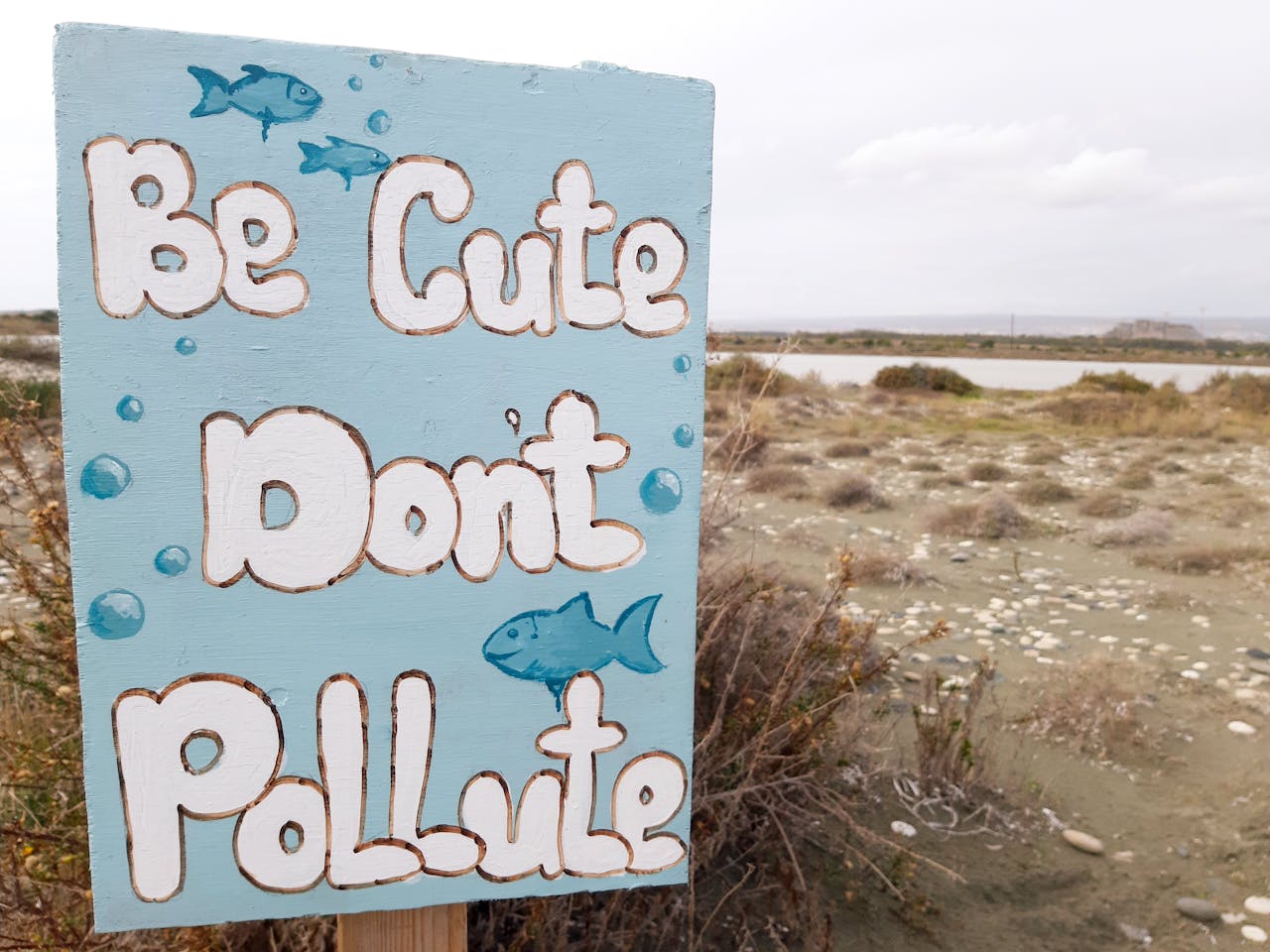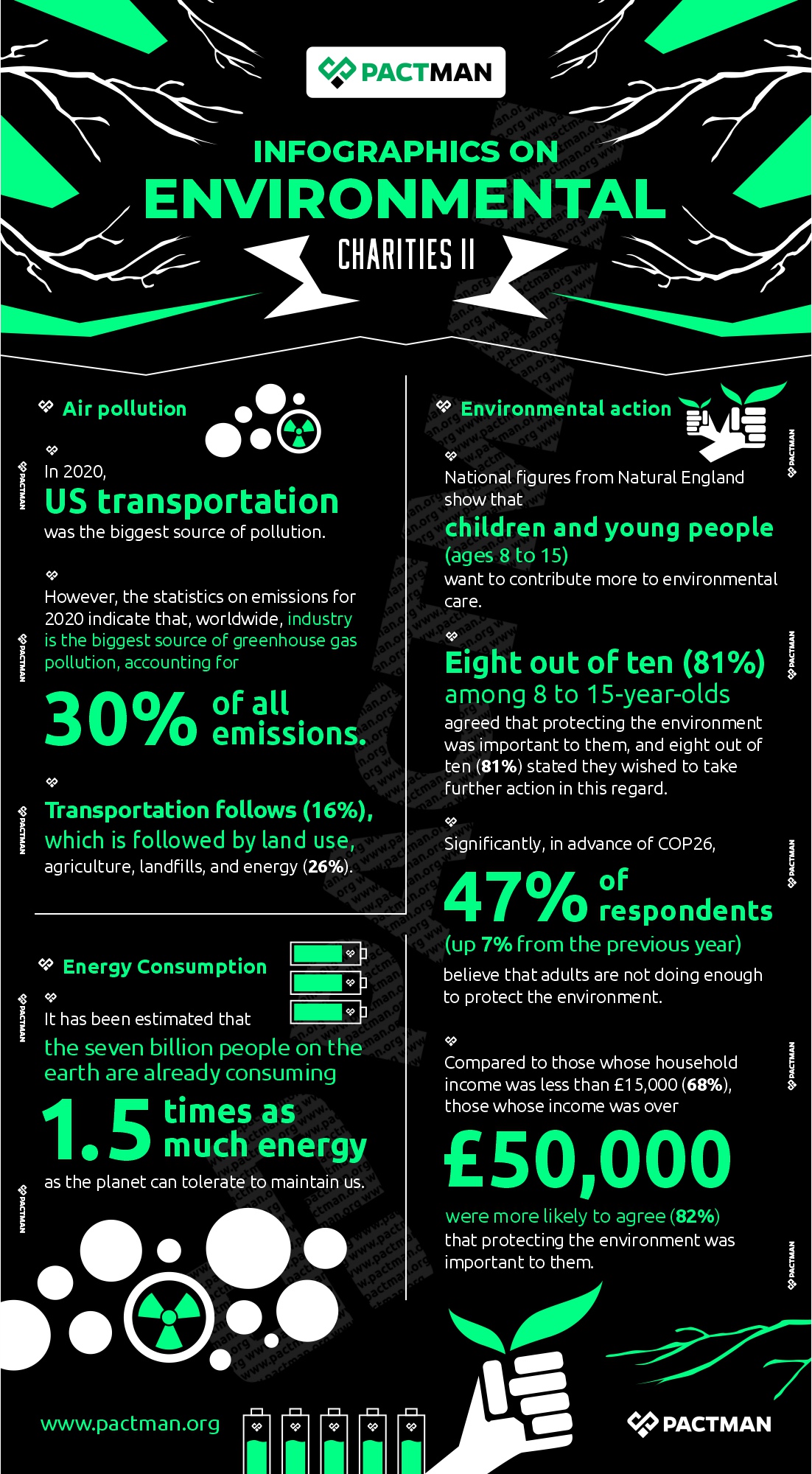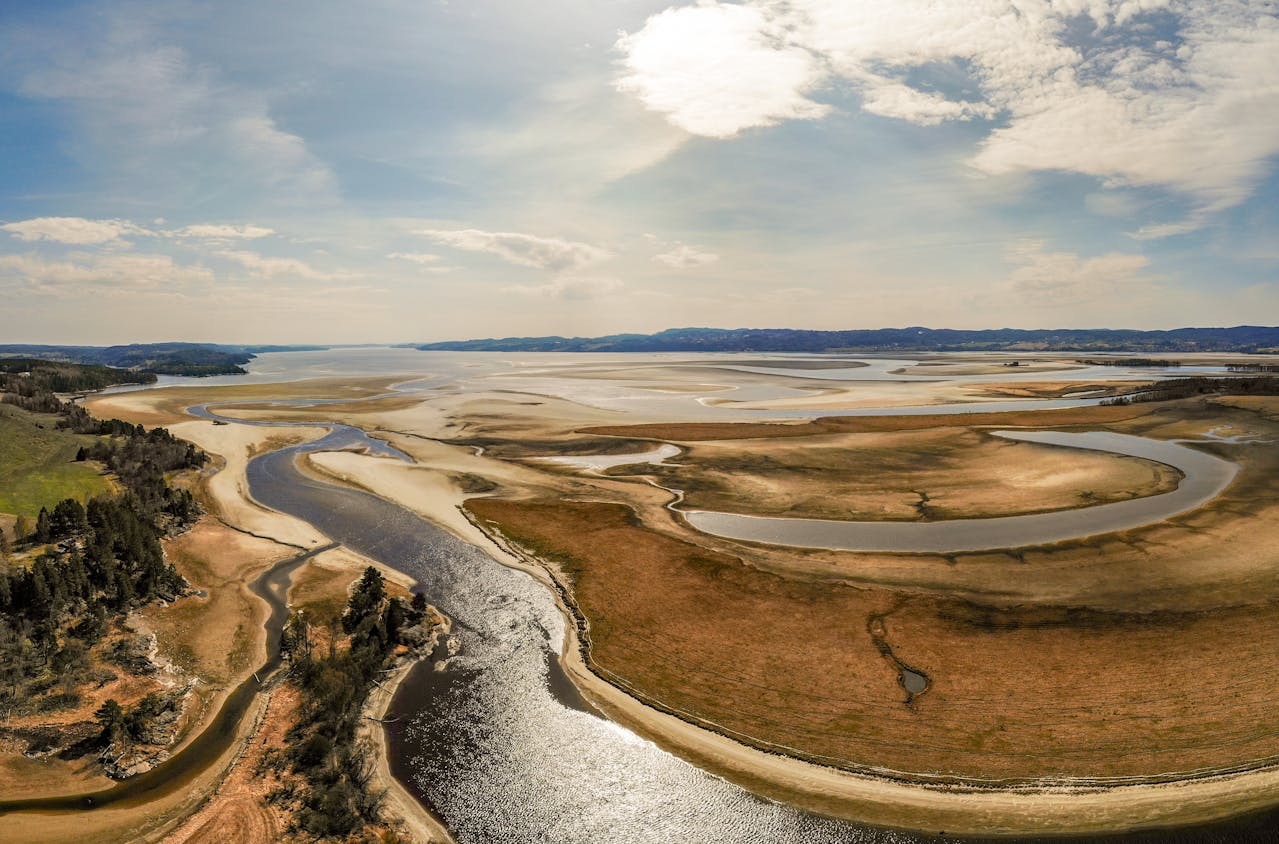I
Introduction
A large number of us feel that it is morally right to safeguard the environment, which has led to the establishment of various environmental charities. We believe that animals have the right to life and that it is our duty to maintain the ecosystem for future generations.

Likewise, by putting a monetary value on the advantages a healthy environment offers to humankind, we can present arguments for environmental action. Essential categories among these advantages include the direct provision of resources, the control of natural systems, aesthetic reasons, and recreational opportunities. According to a report, an estimated $33 trillion worth of value is added to human welfare annually by maintaining a healthy environment.
As we all know, the problem of climate change is even more significant since it represents the biggest economic obstacle of the 21st century. Now more than ever, we cannot underestimate the danger to our planet’s very future if we do not take coordinated action. Thus, while we require growth, we also require green growth that takes into account environmental sustainability. This ensures that economics and ecology go hand in hand.
In this article, we will consider the challenges, impact and sustainable actions of environmental charities as well as the role they play in society.
II
What are Environmental Charities
The term “environmental charities” also known as “environmental NGOs” refers to organisations that work outside of the public and commercial sectors and are motivated by a variety of environmental goals. By and large, these goals include the conservation of wildlife and wilderness areas, biodiversity management, sustainability, lobbying and advocacy, the preservation of natural resources, and recreation.

With their ability to operate outside official state and political channels, environmental charities are uniquely positioned to solve complex issues by raising awareness and bringing about change across industries, governmental levels, regions, countries, and demographics. Also, when it comes to lobbying, negotiating, monitoring, and campaigning for environmental policies, environmental nonprofits are becoming more and more crucial.
There are various ways to categorize these organisations. For instance, charities that focus on the environment can be distinguished based on the problem they aim to solve, their organisational structure, and the scale at which they operate. Another common method is differentiating these organisations according to the environmental issues they address. This includes animal rights, deep ecology, environmental health, resource preservation, wildlife management, and environmental justice, to mention a few.
Even more, environmental NPOs can be considered based on how they address a particular environmental concern, such as a specific geographic region, natural resource, species, habitat, or population group.
Essentially, these organisations obtain funds through a variety of institutional financing sources. This includes government contracts or grants, corporate sponsorships, fees for goods or services, foundation grants, individual donations, bequests, endowments, and corporate sponsorships.
III
Critical Statistics on Environmental Charities
In this section, we will consider critical statistics that emphasize the activities of environmental charities across the globe.
1. Environmental funding
In 2020, only $8 billion of the $471 billion donated by donors to NGOs went to environmental nonprofits representing less than 2% of charitable donations. Also, only 3% of donations in 2021 went to charities that support the environment and the welfare of animals.
Additional data indicates that 2% of charity gifts went to environmental NGOs, which include land trusts, conservation organizations, and wildlife protection groups. Altogether, land trusts, conservation, and wildlife protection were the main beneficiaries of environmental funding. In 2020, these groups accounted for the majority of donations given to environmental charities.

2. Climate mitigation funding
Only 0.4% of philanthropic donations go to organisations that combat climate change. In 2023, $2 billion was given to climate change organisations that aim to cut greenhouse gas emissions.
Asia accounts for 53% of global emissions. Also, the regions and industries that produce the greatest amounts of greenhouse gases receive very little philanthropic support. For instance, in 2020, organisations working to reduce emissions in these regions received only $160 million, or 12% of philanthropic funding.
3. Environmental justice organizations
From the total environmental donations, environmental justice organizations receive about 0.5%. In 2020, these NGOs obtained between $25 and $50 million, which is roughly the amount The Nature Conservancy raises each week.

4. Air pollution
In 2020, US transportation was the biggest source of pollution. The statistics on emissions for 2020 indicate that, worldwide, the industry is the biggest source of greenhouse gas pollution, accounting for 30% of all emissions. This is followed by land use, agriculture, landfills, and energy (26%).
5. Environmental action
National figures from Natural England show that children and young people (ages 8 to 15) want to contribute more to environmental care. Eight out of ten (81%) among 8 to 15-year-olds agreed that protecting the environment was important to them, and eight out of ten (81%) stated they wished to take further action in this regard. Significantly, in advance of COP26, 46% of respondents (up 7% from the previous year) believe that adults are not doing enough to protect the environment. Compared to those whose household income was less than £15,000 (68%), those whose income was over £50,000 were more likely to agree (82%) that protecting the environment was important to them.
IV
Challenges Faced by Environmental Charities
The negative impact of human actions on the environment is increasing at an exponential rate. By and large, it has been estimated that the seven billion people on the earth are already consuming 1.5 times as much energy as the planet can tolerate to maintain us. Furthermore, this computation ignores the detrimental effects of human behaviour on the majority of other vertebrate species.

Nevertheless, there are numerous ways to lessen the negative effects of our exploitation: in the oceans, by protecting fisheries sustainably and refraining from destructive trawling methods; in the forests, by prohibiting clear-cutting and enforcing strict replanting regulations; in mining, by requiring soil remediation and enforcing stringent regulations for tailings ponds; and (hopefully) in the extraction of oil and gas through the development of carbon capture technologies. All of these technologies and best practices involve upfront costs. However, it has been repeatedly demonstrated that the long-term costs of remedying environmental issues after they have occurred are significantly higher than those of preventing them in the first place.
V
Categories of Environmental Action by Environment Charities
This section will consider the top 5 environmental actions carried out by environmental charities. This includes Land Conservation, Advocacy, The Conservation Economy, Wildlife Protection, and Habitat Preservation.

1. Land Conservation
Land conservation covers the purchase of land to preserve or improve the ecosystem or a particular type of biodiversity within it. Also, land purchases and acceptances are included in this category.
A land trust may set aside land for conservation in three different ways: by outright acquisition, donation, or conservation easement. Given the substantial impact on financing requirements, donors ought to be aware of these three tactics which various land trusts employ.
For the region and its people, open spaces and agricultural fields are extremely beneficial. In addition to providing access to plenty of clean water and lowering air pollution, they help safeguard various species’ habitats. Also, it allows people to interact with and enjoy nature.
2. Habitat Preservation (Land Restoration/Maintenance)
Habitat preservation does not entail educating landowners to adopt sustainable practices. Rather, it involves the actual repair or enhancement of land by members of the organisation. This could be hired third parties.
All in all, this category entails measures of habitat quality and ecosystem services. A few of such comprise increased water levels, natural capital, or biodiversity surveys. It also includes land maintenance expenses (such as property taxes and park ranger salaries). Essentially, these Environmental groups are divided into two subcategories: organisations that purchase land to preserve habitat and those that accomplish their objectives by utilising legislation and public awareness campaigns.
A future in which mankind is better equipped to control and cope with the advent of new infectious diseases requires the conservation and regeneration of forests. Conversely, the world will continue to respond to global health crises rather than prevent them if there are no landscapes to balance the requirements of humans and the environment.
3. Direct Wildlife Protection
This category comprises the direct defence or assistance provided to a target species. Examples include population treatment (e.g., vaccinations against diseases) and breeding projects and reintroductions. Also, the target species’ response such as population trends or shifts in risk status might be used to gauge this category.
Currently, the idea that long-term protection of at-risk species depends on the protection of their entire ecosystems is becoming more widely accepted. It follows then that maintaining natural habitats is essential to the survival of species.
Even more, the formation of national and provincial reserves requires the biggest financial outlay. For their habitats, wildlife prefers large, interconnected landscapes. To address this need, more focus should be placed on creating national parks or conservation areas.
4. The Conservation Economy
Presently, only a few nonprofits engage with businesses and communities to directly enhance the link between people and the environment. However, these organisations are known to raise funds for regional environmental projects and educate people about sustainable economic practices. To accomplish their goals, they often collaborate with businesses and municipal governments.
For the most part, there are two types of education discernible among these nonprofits. The first seeks to persuade people to embrace pro-environmental beliefs and actions. The second, on the other hand, tries to persuade landowners, hunters, anglers, and companies to embrace sustainable business practices.
By investing in sustainable economic practices and educating communities, the organisations in this area aim to directly enhance the quality of living. Without a doubt, this is a bold goal and can have a big impact on community lives in the future.
5. Advocacy
These nonprofit organisations prioritise changing public perceptions to influence public policy. Projects falling under this category entail influencing authorities or groups to adopt laws or modify policies to achieve environmental objectives.
Studies meant to persuade specific industries to implement best practices—like the WWF Aquaculture study, for example—would also fall under this category. Adoption of these best practices or the adoption of certifications (such as the Forest Stewardship Council) that guarantee sustainable behaviours could be used to gauge effectiveness.
Therefore, we must ascertain each charity’s performance in each of these areas of focus to assess its efficacy. For example, we might conclude that a wildlife conservation organisation is doing an excellent job of pushing for the preservation of a particular species. However, it may be less successful at carrying out studies that would bolster its claims.
VI
Top Environmental Charities Globally
In this section, we will consider some of the most outstanding environmental charities across the globe.

-
EWG
The Environmental Working Group (EWG) stands out for drawing attention to out-of-date laws, destructive farming methods, and business loopholes that endanger both human health and the environment. Since 1993, the nonprofit has been an active advocate working to alter the discourse on environmental health and placing individuals and families at the forefront of the discussion.
Primarily, the goal of EWG is to provide communities with cutting-edge information to make wise decisions and lead a healthy life in a healthy environment. The charity is a government affairs firm that influences laws and policies as well as a public relations media resource that shapes the environmental narrative and culture.
-
Rainforest Alliance
The Rainforest Alliance is a global nonprofit working at the interface of business, agriculture, and forests to make responsible business the new normal. Also, the nonprofit has begun its alliance formation to protect forests, empower farmer and forest community livelihoods, advocate for their human rights, and assist them in mitigating and adapting to climate disasters.
Rainforest Alliance envision a world in which humans and the environment coexist in peace. Also, the nonprofit is making the world a more sustainable place. This is by harnessing social and market forces to protect nature and enhance the lives of farmers and forest communities. By bringing together diverse allies, Rainforest Alliance is effecting long-term change on some of today’s most important social and environmental concerns. The nonprofit has begun its implementation of proven and scalable solutions on the ground while testing innovative ways to drive change.
-
Earthjustice
Earthjustice is a leading nonprofit that specialises in environmental law. By leveraging the force of legislation and strong partnerships, the organisation works to safeguard public health, save wildlife and beautiful locations, promote clean energy, and fight climate change.
The idea behind Earthjustice is that everyone has a right to a safe and healthy environment. Serving hundreds of public interest clients, the nonprofit provides excellent legal representation at no cost. Earthjustice was established in 1971 and has contributed to the advancement of 100% renewable energy, preserved priceless wildlands, and improved air quality. In addition, the non-profit has protected innumerable species that were in danger of becoming extinct.
-
Pure Earth
Leading international nonprofit, Pure Earth, is committed to reducing pollution in low- and middle-income nations. To stop harmful exposures, safeguard public health, and restore ecosystems, Pure Earth collaborates with local governments, business leaders, and communities.
Based on both quantitative and qualitative criteria, Pure Earth ranks sites in order of priority for long-term investment. With almost 100 specialists operating across ten regional offices worldwide, Pure Earth has completed projects in 50 low- and middle-income nations.
-
Ecotrust Canada
The goal of Ecotrust Canada is to create environmentally sound communities. Hence, the nonprofit leverages strategies that support sustainable housing, community development, forest sustainability, and fisheries conservation. In addition, their efforts to promote sustainable fishing and forestry have yielded quantifiable outcomes.
Ecotrust is one of the eleven institutions that Canada’s federal government chose to carry out its “Forest Communities” initiative. Since it is run more like a corporation than a typical charity, Ecotrust is heavily supervised by its board with a management team that has a wealth of expertise.
Conclusion
More and more environmental charities are working together to accomplish their goals. For the most part, these environmental networks are established to combine and maximise available resources and political clout to achieve a more significant impact on the policy problems they share.
Environmental nonprofit organisations keep an eye on concerns, circumstances, and public policy. Also, they have a significant impact on public opinion and decision-making at all governmental levels and globally. This is due to their high visibility in the public domain. These entities work to raise public awareness of environmental issues and problems by taking direct or indirect action. Their activities include the protection of endangered species, global warming, and climate change, among others.



4 Responses